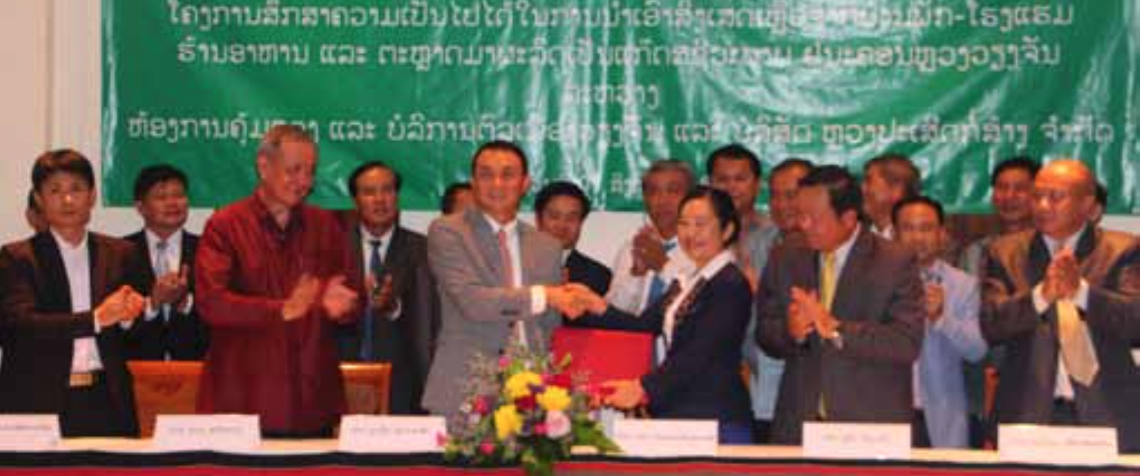The Vientiane Office of Management and Service and Luangpaseuth Construction Co., Ltd. are teaming up to launch a feasibility study for a biogas project based in Vientiane.
The project will involve four districts in central Vientiane and will focus on large hotels, restaurants and markets. The duration of the study has been approved for six months from the day the Memorandum of Understanding is signed.
The purpose of the project, besides producing biogas, will be to reduce the quantity of garbage sent to landfill sites as well as to separate garbage into categories for recycling.
The project hopes to make Vientiane a cleaner city by promoting the city’s “six S’s” including being sa-aath (clean) and sikhieo (green), while also encouraging Lao and foreign investment in the production of biogas.
The Memorandum of Understanding was signed on Monday by the Head of Office of the Vientiane Office of Management and Service, Ms Vilayvone Chanthalaty, and President of the Luangpaseuth Construction Co., Ltd., Mr. Bounleuth Luangpaseuth.
The signing ceremony was also attended by the Vientiane Vice Mayor, Mr. Keophilavanh Aphaylath.
Speaking at the signing ceremony, Ms Vilayvone said the waste produced by hotels, restaurants and markets in the four districts would be used in the feasibility study.
According to a report commissioned by the Vientiane authorities, it is the plan to make Vientiane a “clean city” by 2030 and plans are in place to turn the four central districts into a model of cleanliness.
Vientiane covers an area of 3,920 square kilometres and has a population of around 800,000 people. Authorities believe the city’s population will rise to about 1.4 million by 2030.
Last year, the capital produced about 300-400 tonnes of rubbish daily while authorities were only able to collect 250-300 tonnes per day, according to the Vientiane authorities. As a result the roadsides and other places are littered with garbage, which degrades the city’s appearance and the cleanliness of the environment that people live in.
Most of the garbage produced in Laos is food waste, construction debris and plastic packaging. Some people either dump or burn their own garbage on their own properties or throw it away in public areas, including along rivers.
Source: Vientiane Times



